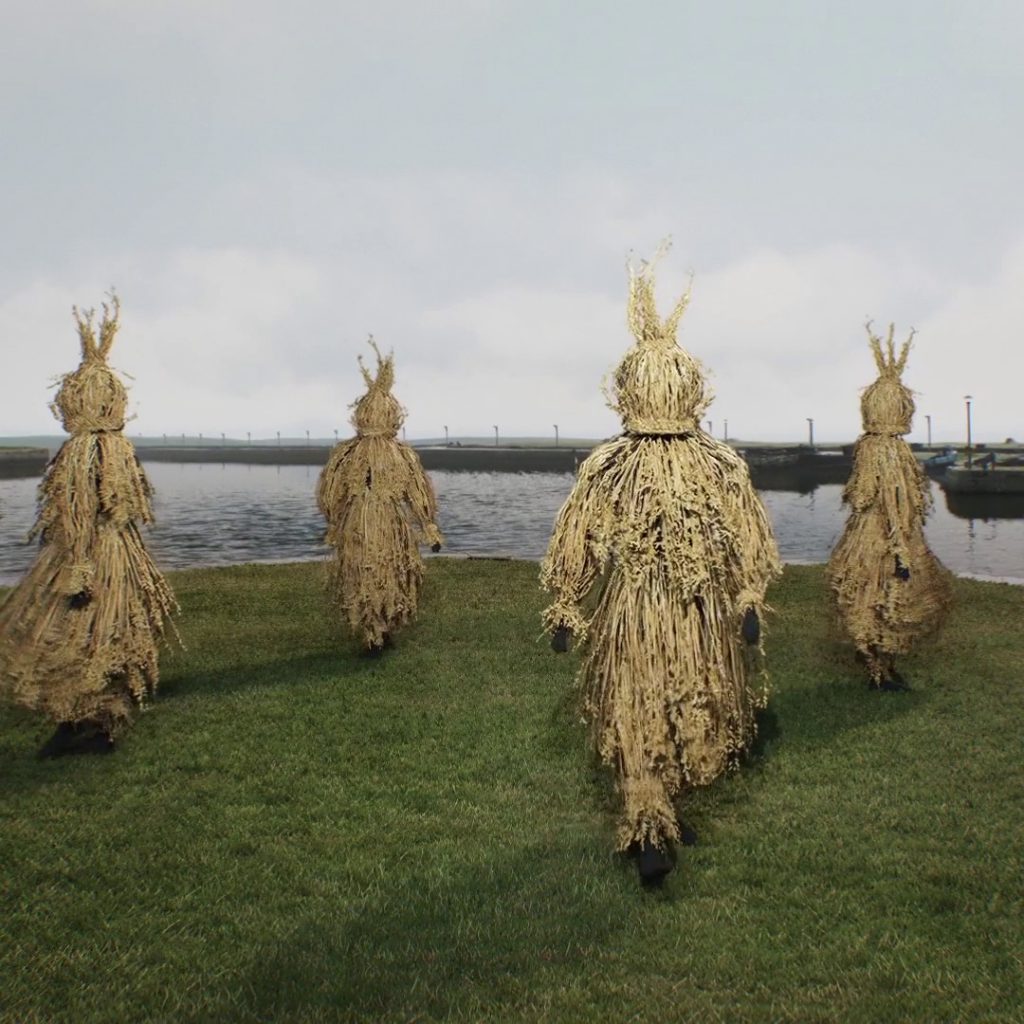Can data be continuously drawn from the perpetual dance of life? Can it make visible the structures of power and networks of energy that have emerged through the expansion of human endeavor? How can the alarming global rise in temperatures and humanity’s addiction to carbon-based fuels be arrested? John Gerrard has been a vigilant observer of these developments, and in his work, he transforms data into large-scale, real-time simulations and algorithmically-produced imagery by employing cutting-edge programming languages and gaming engines once used by militaries. His practice culminates in long-term, interdisciplinary engagements that expand modes of circular thinking and holistic visions of life.
Gerrard’s latest piece, Corn Work (Corrib) (2020) is a simulation projected on a cube cast in polished mirror aluminum that features four Straw Boys, figures drawn from Celtic paganism. Still present in rural areas, these young men wear costumes made of straw and are said to visit brides in advance of weddings, recalling rituals in which anonymized human figures unleash celebratory and often ecstatic behaviors. Gerrard collaborated with contemporary dancers, aged sixteen to seventy, who “performed” and animated these figures in suits made from heirloom Irish grain types that correspond to the annual cycle: barley (spring), oat (summer), rye (autumn), and wheat (winter). Each dancer arrives and leaves in a formal exchange on seasonal solstices and equinoxes, echoing the production of flour through the circular motion of the mills as well as an early sun symbol, the solar cross. Through novel forms of technology like motion matching and neural networks, both time and space are captured as data, and a perpetual choreography is produced. In the backdrop, the landscape follows the temporal cycles of Galway, Ireland—where the work was initially presented as a site-specific commission—and the flow of the river Corrib against the rise and fall of daily and annual temperatures.
For Gerrard, these figures originate from a time when a more equitable relationship between humans and the landscape was still intact. Their movements carry the melancholic legacy of exhausted ecologies across the globe and follow a choreographic logic with a keen capacity to “learn,” respond to, and transform a landscape. The artist has described their movements as “a lament, a slow circular solar performance informed by motions of denial, pain and suffering. This is a grieving work for a nonhuman world that perishes as human populations thrive and expand.”
Krisztina Hunya

